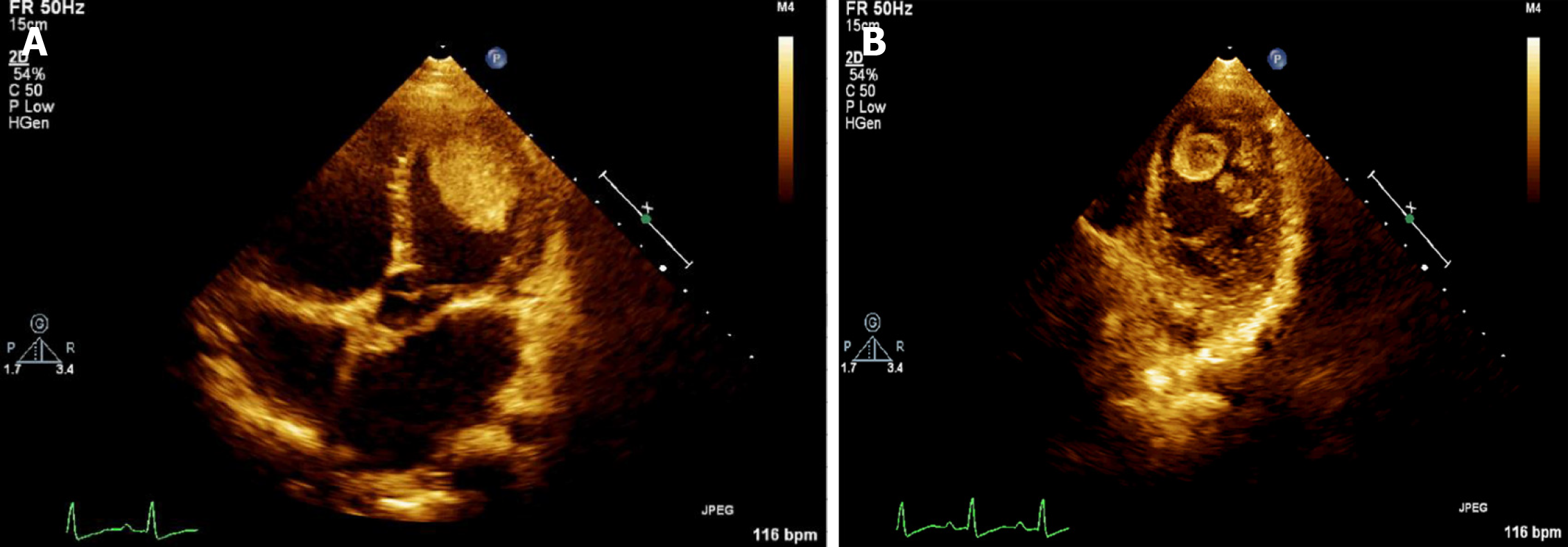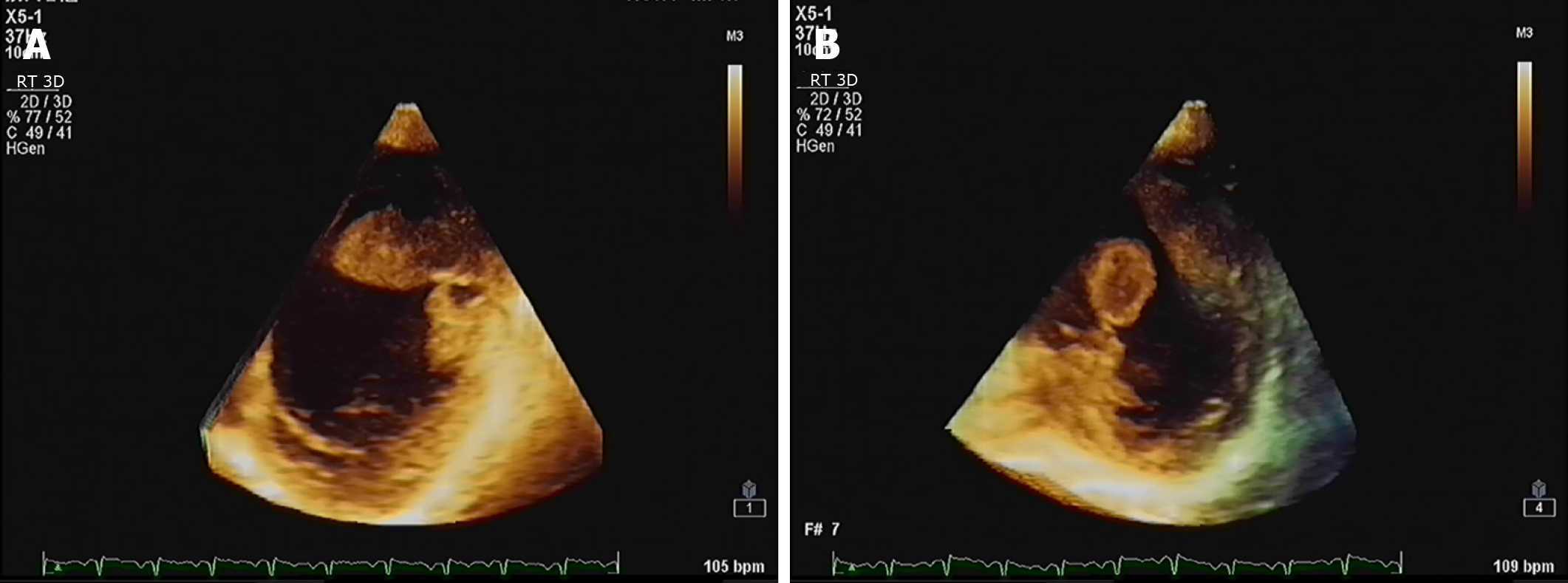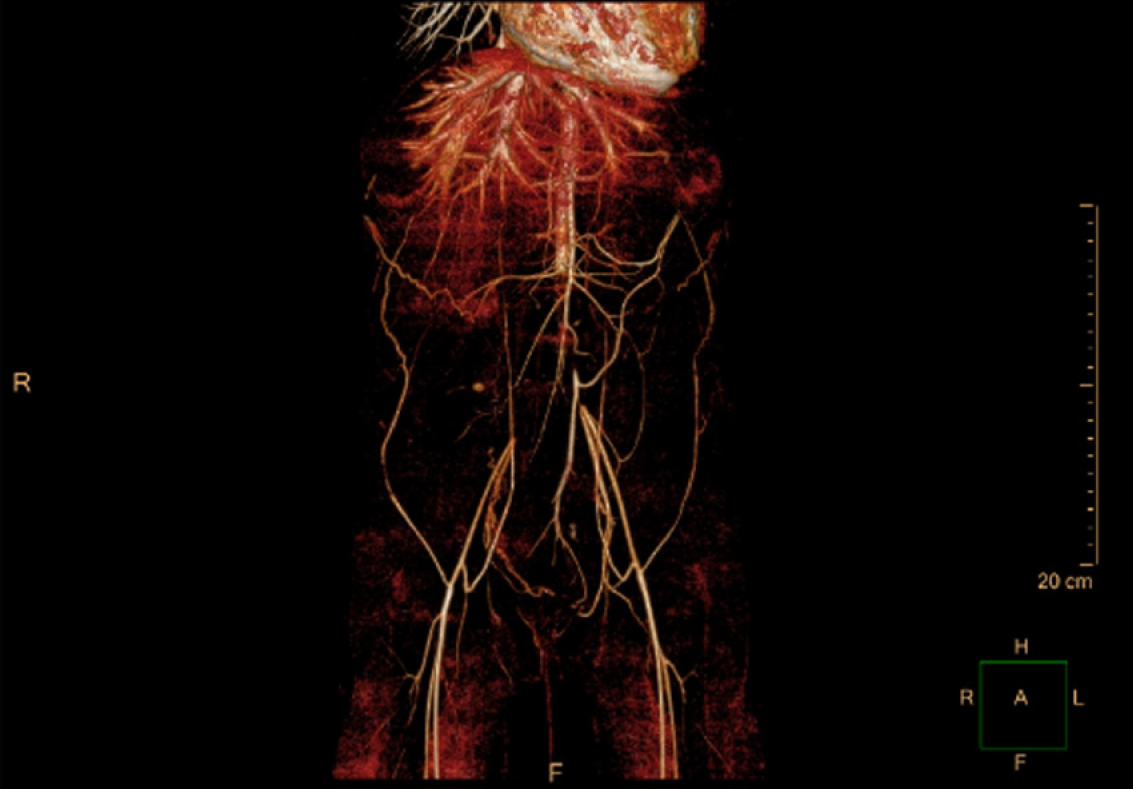Copyright
©The Author(s) 2021.
World J Clin Cases. May 16, 2021; 9(14): 3365-3371
Published online May 16, 2021. doi: 10.12998/wjcc.v9.i14.3365
Published online May 16, 2021. doi: 10.12998/wjcc.v9.i14.3365
Figure 1 False color imaging of thrombi using two-dimensional echocardiography.
A: Apical four-chamber view shows a large thrombus near the apex of the lateral wall of the left ventricle; B: Two thrombi were also detected at the apex of the left ventricle.
Figure 2 Still image derived from three-dimensional echocardiography.
A: Thrombus protruded from the lateral wall of the left ventricle with a wide base; B: Thrombus with short and thin stem protruded from the left ventricular apex.
Figure 3 Thrombi imaging using contrast echocardiography.
A: There was contrast agent entering at a part of the junction between the base of the thrombus and the left ventricular wall. The inner portion of the thrombus showed no contrast enhancement; B: Contrast enhancement was detected in the peripheral part of the two thrombi in the left ventricular apex, while most of the center portions were not contrast-enhanced.
Figure 4 Thromboembolism view from three-dimensional computed tomography angiography.
Thrombosis was detected from the abdominal aorta to the bilateral common iliac arteries.
- Citation: Sun LJ, Li Y, Qiao W, Yu JH, Ren WD. Incremental value of three-dimensional and contrast echocardiography in the evaluation of endocardial fibroelastosis and multiple cardiovascular thrombi: A case report. World J Clin Cases 2021; 9(14): 3365-3371
- URL: https://www.wjgnet.com/2307-8960/full/v9/i14/3365.htm
- DOI: https://dx.doi.org/10.12998/wjcc.v9.i14.3365












